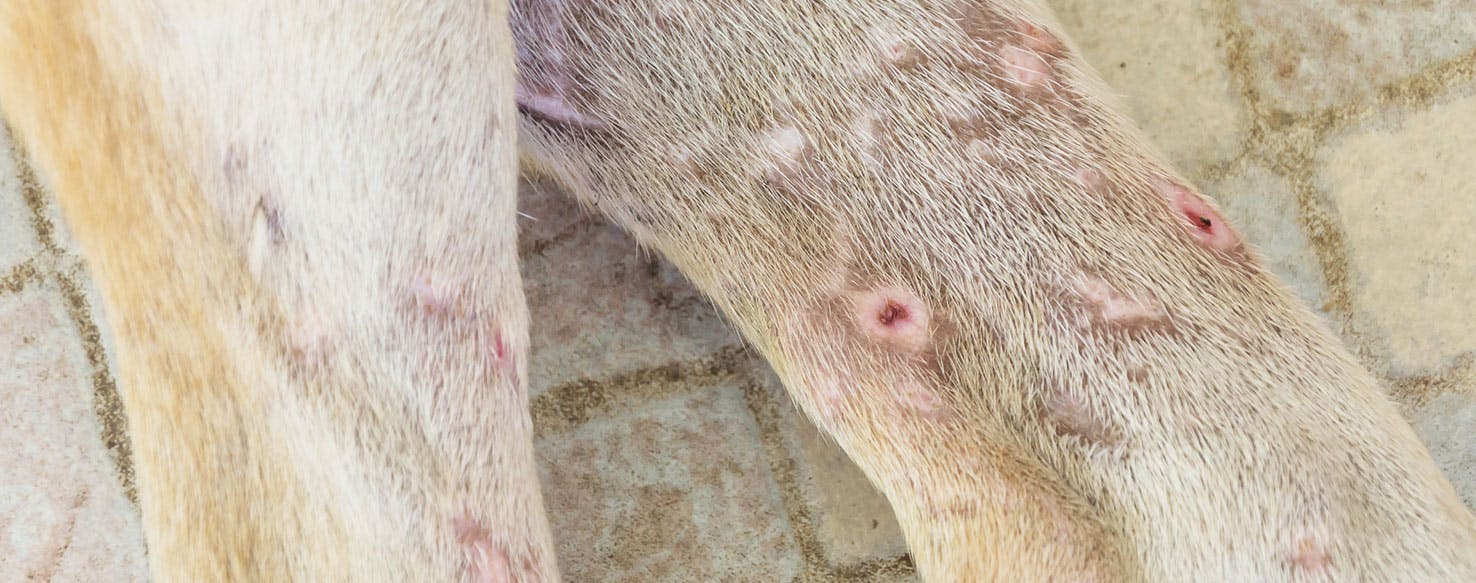Dog fights happen, even to the best of dogs and with the most responsible of pet parents. Whether your dog is on a leash, roaming free, or at a dog park, other dogs biting your dog is not only possible but a common reason for pet parents to bring their dogs to their veterinarian for an emergency visit. Even animals within your own home could inflict a bite wound on your dog. If your dog has been involved in a fight with an animal you do not know or another dog, you may want to visit with your veterinarian and be sure the other animal is tested for rabies, if possible. In the least, your veterinarian may want to administer antibiotics to fight any infection from the offending animal's mouth and pain medications to assist with pain.
Assessment
Some bite injuries are not incredibly apparent. If your dog has been fighting with another animal, look your dog over carefully for wounds. If a wound is visible and bleeding, apply a clean cloth to the wound or wrap it around the wound for added pressure to control the bleeding. Some parts of the body are more vascular than other regions. Head wounds will bleed more profusely than leg or trunk lacerations. Once you have control over your dog and have done a quick initial assessment, you will need to decide if your dog needs emergency care right away or if you can wait for your veterinarian to fit you in with an appointment.
Wound Care
To clean the wounds at home, you can apply a small amount of petroleum jelly on the wound and clip the fur around the bites. Petroleum jelly will help to keep hair out of the injury and prevent bacteria located on your dog’s fur out of the wound. Once the wound is visible and free of the obstacles or fur, clean it thoroughly with a betadine, iodine, or hydrogen peroxide solution. Whether you are continuing veterinary care or cleaning minor wounds from home, you will need to continue to keep the wound clean with hydrogen peroxide and a gentle gauze several times a day. Applying antibiotic ointment will help keep infection away, keep the wound clean and free of bacteria, as well as help with healing.
Infection
If, for any reason, you think your dog has an infection, or if a known infection has worsened, contact your veterinarian for an exam or recheck and antibiotics. Three basic signs of infection in your dog will be swelling, discharge, and redness. Restricting exercise and keeping your dog resting and relaxed while all bite wounds heal is crucial. Your dog's skin will need time to heal without risk of reopening the wounds. If your veterinarian installed a drain, you will want to keep the area around the drain clean and clear of any pus discharge. Drains can usually be removed after three to five days. After the drain is removed, you will need to follow up at home with hydrogen peroxide and gauze cleaning and home care for several days as the bite wounds heal.
Prevent When Possible
Dog fights can be scary for a pet parent to witness and also quite scary for your dog. The absolute best prevention for bite wounds is to keep control over your dog and know your surroundings when you are out with your pup. If you are in a public area with other dogs around, keep your dog on a tight leash and within your control. Don't let your dog roam freely outside around your house or with you on running trails or public areas. Dog training classes are helpful for teaching your dog obedience. However, not all dogs will be as well behaved as your dog might be.
Though some dog fights may not be prevented, you can do your part as a responsible pet parent by following the rules of common sense when you are out in public with your dog or around your home and neighborhood.


